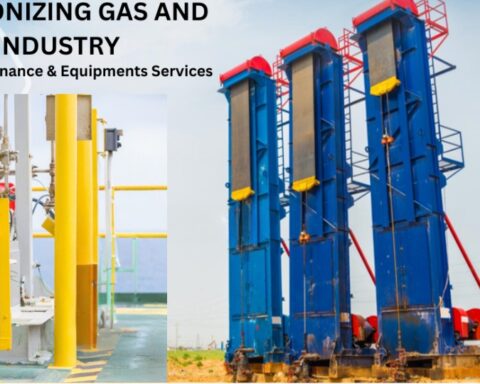Walking the busy streets of New York has charm, but with so many people walking, riding, and driving, it can also be dangerous. The rise in pedestrian accidents in the state shows the serious issue of pedestrian safety.
Many New Yorkers commute by foot, so understanding what causes this accident is crucial. Knowing the causes helps in prevention, and if you’ve unfortunately been a victim, it paves the way to seek advice from a Long Island pedestrian accident lawyer.
Distracted Driving
Several types of distractions can cause pedestrian accidents. These include:
Mobile Phone Usage
One of the most common forms of distraction is using mobile phones. Texting, browsing, or even glancing at an incoming call can divert a driver’s attention from the road. This split-second lapse can lead to a driver missing a pedestrian crossing the street or failing to notice a traffic signal.
In-Car Entertainment Systems
Modern vehicles come equipped with sophisticated entertainment systems. Adjusting the radio, selecting a playlist, or navigating touch-screen controls can become major distractions. As drivers fumble with these systems, their focus drifts away from the road and potential hazards, including pedestrians.
External Distractions
It’s not just the gadgets inside the car. Billboards, roadside events, or a captivating sunset can momentarily draw a driver’s attention. These external factors, seemingly innocent, can prove difficult if they coincide with a pedestrian’s movement.
The Human Element
Conversations with passengers, daydreaming, or emotional distress can also impact a driver’s concentration. Mental distractions might not seem as tangible as physical ones, but their effect on driving capability can be just as detrimental.
Speeding
Any time you go faster than the set speed limit, you are putting yourself and others at risk – especially pedestrians.
Reduced Reaction Time
When drivers speed, they have less time to react to unexpected situations. A pedestrian stepping onto the street, a child chasing a ball, or someone crossing a less visible area can be overlooked. Speeding drastically cuts the time available to respond, increasing the risk of accidents.
Increased Stopping Distance
A vehicle’s stopping distance is directly affected by its speed. Even if a driver spots a pedestrian and hits the brakes at higher speeds, the vehicle will travel a greater distance before coming to a halt. This can often lead to collisions that could have been avoided at lower speeds.
Severity of Impact
The faster a vehicle moves, the greater the force of impact in a collision. Even a slight increase in speed can result in more severe injuries or fatalities for pedestrians. The difference between 25 mph and 35 mph can be life-altering.
Impaired Judgment
Speeding can give drivers a false sense of control, leading them to make risky maneuvers or underestimate dangers. This overconfidence and speed can be deadly, especially in areas with high pedestrian traffic.
Failure to Yield
Pedestrians usually have the right of way. If a driver does not yield to pedestrians, it may cause an accident.
Misunderstanding Traffic Rules
Many drivers, whether due to ignorance or arrogance, don’t fully understand or choose to disregard pedestrian right-of-way laws. This can lead to drivers not stopping or slowing down at crosswalks, placing pedestrians in immediate danger.
Busy Intersections
At bustling intersections, drivers often focus on other vehicles, trying to navigate their way, and may overlook pedestrians waiting to cross or already in the crosswalk. The rush to “beat the light” or merge can overshadow the essential act of yielding to pedestrians.
Blind Spots and Obstructions
Sometimes, parked cars, large signs, or other obstacles can obstruct a driver’s view of a crosswalk. While drivers should approach these areas cautiously, many don’t, resulting in them failing to yield to pedestrians they simply didn’t see.
Impatience and Distraction
For some drivers, the urge to reach their destination quickly outweighs safety considerations. This impatience and possible in-car distractions can lead to a disregard for yielding, especially when they believe they have the right-of-way.
Driving Under the Influence (DUI)
It is never safe to drive after consuming alcohol or drugs. Besides increasing the risk of an accident, it also increases the risk of hitting a pedestrian.
Impaired Judgment
Alcohol and drugs profoundly affect the brain’s ability to make sound decisions. Drivers under the influence often misjudge distances, speed, and timing. This impaired sense of judgment makes it difficult to anticipate and respond to pedestrians crossing or walking along the road.
Slowed Reaction Time
Substances like alcohol and certain drugs slow down the brain’s processing speed. A driver’s ability to react quickly to sudden situations, such as a pedestrian emerging between parked cars, is compromised, leading to potential collisions.
Reduced Coordination
Coordination is essential for driving, from steering the wheel to applying brakes. Under the influence, a driver’s motor skills deteriorate, making it challenging to perform even basic driving tasks effectively. This increases the risk of swerving into pedestrian zones or failing to stop in time.
Vision and Perception Issues
Alcohol and drugs can blur vision, alter depth perception, and impair night vision. This means drivers might not see pedestrians until it’s too late, or they might misjudge the distance between their vehicle and a person crossing the street.
Pedestrian Errors
It is not just drivers that can be at fault for pedestrian accidents. The pedestrian may be to blame, too.
Distractions and Inattentiveness
Just as drivers can be distracted, so can pedestrians. Engaging in activities like texting, wearing headphones, or even deep conversations can divert attention from the surrounding environment. This distraction can lead pedestrians to step into traffic without checking for oncoming vehicles or ignoring traffic signals.
Jaywalking
Crossing the street outside designated crosswalks or intersections is a common pedestrian error. Jaywalking can catch drivers off guard, especially if they aren’t expecting someone to cross at a particular point on the road.
Ignoring Traffic Signals
Pedestrians, at times, might feel it’s safe to cross during a red light or without waiting for the pedestrian signal. However, disobeying these signals can lead to accidents, especially if drivers aren’t anticipating pedestrian movement during specific light phases.
Alcohol and Substance Impairment
Just as drivers can be impaired, pedestrians can also be under the influence of alcohol or drugs, impairing their judgment, coordination, and reaction times. This can lead them to make risky choices, like darting into traffic or misjudging the speed of oncoming vehicles.
Shared Responsibility for Safer Streets
The streets of New York pulse with life, but ensuring safety is a collective responsibility. Every driver and pedestrian plays a part. If you, unfortunately, find yourself at the receiving end of an accident, don’t hesitate to consult a Long Island Pedestrian Accident Lawyer.





